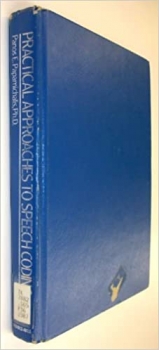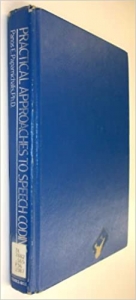Product details
- Publisher : Independently published (May 22, 2017)
- Language : English
- Paperback : 239 pages
- ISBN-10 : 1723821861
-
ISBN-13 : 978-1723821868
جلد سخت سیاه و سفید_کتاب Expert Systems in Prolog
The machine learning capabilities of today's AI are extremely exciting, but they are only one part of the architecture of today's systems. For example, self-driving car technology uses machine learning to interpret the visual field around a car, but it's good old fashioned rule-based AI that contains the plans on what to do with that information.Similarly, the phenomenal program that plays Go at a master level uses machine learning to evaluate board positions (very difficult for a machine to do) but uses conventional AI for deciding what to do with that information.Written a number of years ago, Building Expert Systems in Prolog is still a classic text on knowledge engineering. The name might be a bit misleading, as it's not so much about building expert systems, but rather on building the knowledge representation and reasoning engine tools used for various types of expert system applications. (Including, of course, examples of each kind of system.)As such, it provides details and working code for identification systems, systems that need to cope with uncertainty, forward-chaining planning and configuration systems, frames for representing complex layers of information, and ideas for prototyping/implementing any way of representing knowledge and algorithms for reasoning over that knowledge.The text is a bit more general than just a Prolog text. Yes, all the code for implementing these systems is written in Prolog, but Prolog is more than just an implementation language. Because it is logic programming, a Prolog program is really a logical specification of an application. Yes it runs, but it can also be used for rapid prototyping, and the Prolog code itself can be used to precisely specify how to implement the system in any other language.In other words, the architectures of these systems will be the same, no matter what language they are implemented in, and the use of Prolog for rapid prototyping is covered in the book as well.
منابع کتاب جلد سخت سیاه و سفید_کتاب Expert Systems in Prolog
قابلیت های یادگیری ماشین از AI امروز بسیار هیجان انگیز است، اما آنها تنها بخشی از معماری سیستم های امروز هستند. به عنوان مثال، فن آوری خودرو خود رانندگی از یادگیری ماشین استفاده می کند تا زمینه بصری را در اطراف یک ماشین تفسیر کند، اما AI مبتنی بر قانون خوب قدیمی است که شامل برنامه هایی است که با این اطلاعات چه کار می کند. به طور خاص، برنامه فوق العاده ای که در آن بازی می کند سطح کارشناسی ارشد از یادگیری ماشین برای ارزیابی موقعیت های هیئت مدیره استفاده می کند (بسیار دشوار است برای یک دستگاه برای انجام)، اما از AI معمولی برای تصمیم گیری در مورد این اطلاعات استفاده می کند. چندین سال پیش، ساخت سیستم های کارشناس در Prolog هنوز یک متن کلاسیک است مهندسی دانش این نام ممکن است کمی گمراه کننده باشد، زیرا این امر در مورد ساخت سیستم های کارشناس بسیار زیاد نیست، بلکه بر ساخت نمایندگی دانش و ابزار موتور استدلال مورد استفاده برای انواع مختلف برنامه های کارشناس سیستم استفاده می شود. (از جمله، البته، نمونه هایی از هر نوع سیستم.) به این ترتیب، جزئیات و کد کاری را برای سیستم های شناسایی، سیستم هایی که نیاز به مقابله با عدم قطعیت، برنامه ریزی و سیستم های پیکربندی به جلو، فریم برای نشان دادن لایه های پیچیده اطلاعات را فراهم می کند ، و ایده ها برای نمونه سازی / اجرای هر راهی برای نشان دادن دانش و الگوریتم ها برای استدلال بر این دانش. متن کمی بیشتر از یک متن پراکنده است. بله، تمام کد هایی برای اجرای این سیستم ها در Prolog نوشته شده است، اما Prolog بیش از یک زبان پیاده سازی است. از آنجا که برنامه نویسی منطقی است، یک برنامه Prolog واقعا یک ویژگی منطقی یک برنامه کاربردی است. بله آن را اجرا می کند، اما همچنین می تواند برای نمونه سازی سریع استفاده شود، و کد Prolog Code می تواند به طور دقیق مشخص شود که چگونه سیستم را در هر زبان دیگر اجرا کنید. به عبارت دیگر، معماری این سیستم ها یکسان خواهد بود، نه ماده ای که زبان آنها اجرا می شود و استفاده از Prolog برای نمونه اولیه سریع در کتاب نیز پوشش داده شده است.































ارسال نظر درباره جلد سخت سیاه و سفید_کتاب Expert Systems in Prolog